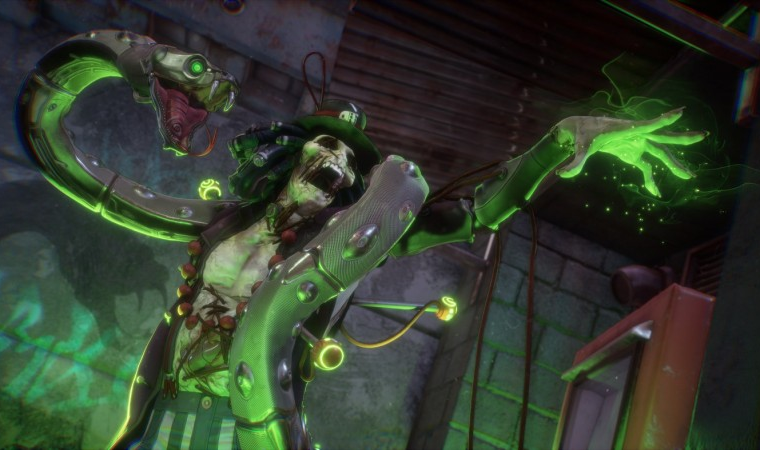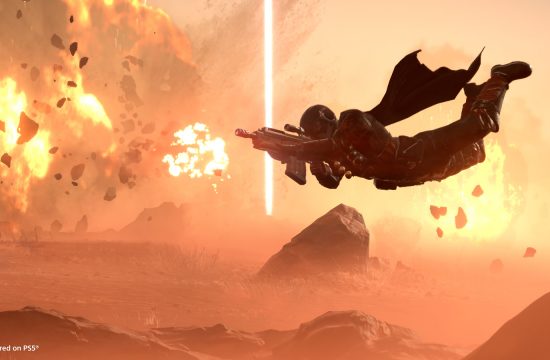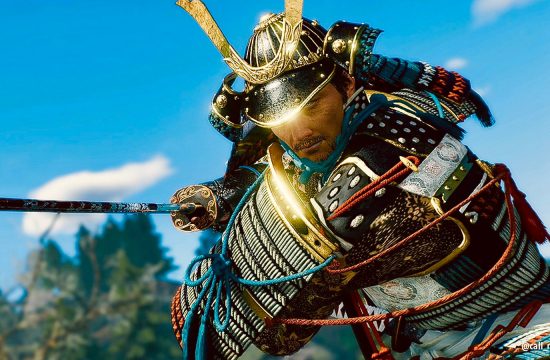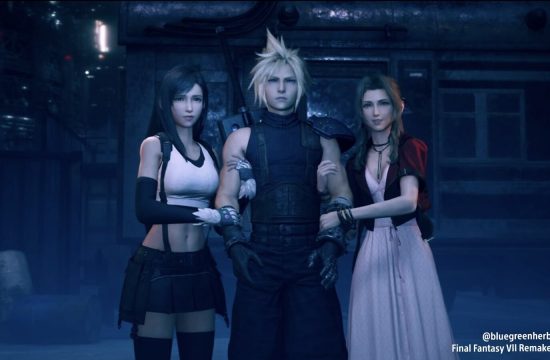Bleeding Edge is a unique 4v4 competitive experience that shows a little flash in its third-person approach, but doesn’t deliver much of a punch in combat or enough variation in its match types and maps. Developer Ninja Theory draws clear inspiration from Blizzard’s Overwatch, delivering similar hero-focused play, with each teammate playing a critical role as a tank, support, or damage dealer. While some of the Overwatch nods are a little too obvious, like a hip, headphone-wearing healer who just happens to be from Rio De Janeiro, or a tank who can take off in a sprint to slam an opponent into a wall, Ninja Theory brings its own brand of creativity to the heroes. However, that style only goes so far, and the fun they generate flatlines after just a few hours.
Launching out of a safe zone on hoverboards towards the enemy is a fun way to kick off a match, and the introductory clash that takes place gives a good read of the strategies being deployed by both sides. Your team’s healer could be targeted by a ninja named Daemon who can turn invisible to sneak onto your backline. His stealth threat will need to be countered or he’ll create chaos for your healer all match long. If you are overly aggressive in your push, you may even be lured into a zone filled with turrets by the gun-wielding Gizmo, or the witch Maeve could subdue your tank in a magical cage for an easy team assault.

The character abilities are well thought out, are nicely balanced in terms of cooldowns, and their strategies can be figured out quickly and used effectively. Ninja Theory did a nice job with the introductory 11 fighters; each approach combat in different ways, and they look amazing. One character has a snake for an arm, another rides around on a gas-filled balloon. Ninja Theory also makes sure that their unique looks are reflected in play and put to good use.
Given the third-person viewpoint, melee strikes and combos are a big part of the experience, but so are medium-range attacks – you can’t snipe in these battles, you need to be relatively close to deal any damage. Since players are twitchy in movement, a handy lock-on system keeps you glued to your target, meaning if you are close, you’re going to hit them unless they time an evasive move or parry you – both of these abilities are handled well and feel great when executed properly. The melee attacks, as powerful as they look, don’t deliver that satisfying weight of contact, and all opponents have plenty of health, so you need to hack at or shoot at them a bunch. What usually happens, if you don’t have the help of other teammates, is your opponent runs away, and you chase them, and they run more, and you chase more, picking at them slowly or disengaging entirely. The slowness of the base movements and the massive amounts of open space to maneuver steal away the intensity of the one-on-one battles. Most of the kills I achieved weren’t satisfying and were either oddly played out wars of attrition or getting a lucky last shot on a running foe.
At launch, Bleeding Edge offers two match types: Power Collection, the better of the two, sees teams collecting canisters that appear on the map and turning them in to zones for points, and Objective Control, where players capture and hold zones to score points. Power Collection has a nice risk/reward mechanic in that if you grab a canister, the opponent can kill you and take it. If you are sitting on nine canisters, you become a target and your teammates will hopefully try to protect you. While the maps deliver different hazards like moving trains, missile strikes, and electrical fences, there are only five at launch and the feeling of being in the same place again sinks in quickly.
Longevity also isn’t found in the unlockable content for each fighter. Most of the skins are just color swaps, and the decals on the hoverboards can’t really be seen while playing. Additionally, the mods you earn for leveling up, while giving small bumps to abilities, are a lackluster reward overall. The best unlockables are taunts, which are humorous, yet you’ll likely use them most in the pre-match lobby.
Bleeding Edge has plenty of potential and I had fun with it in my first couple of hours, yet lost interest in it quickly, as the battles alone weren’t enough of an allure to keep going. Like most living competitive games, there’s a chance Ninja Theory could greatly enhance the experience over time. For the time being, however, it’s entertaining for a bit and then it fades fast.











